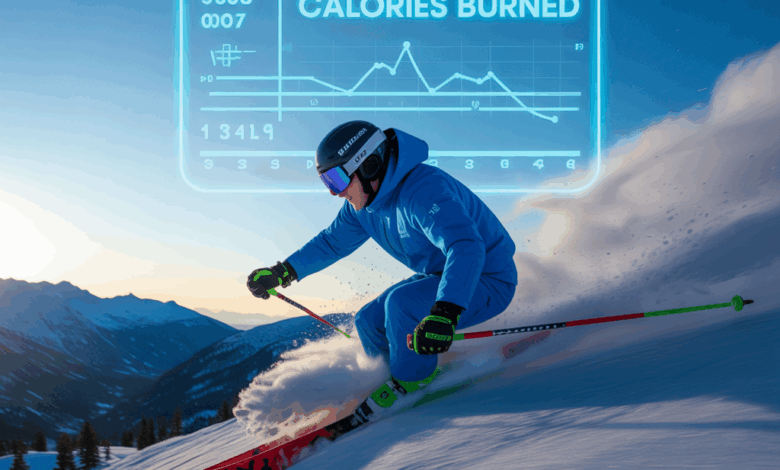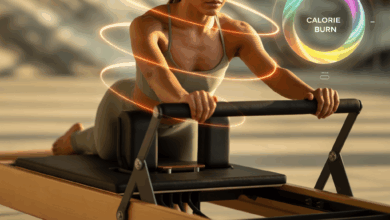How Many Calories Does Downhill Skiing Burn

Picture this: you’re standing at the top of a powder-covered run, heart beating a little faster from the climb and excitement, wondering if those turns, stops, and quick bursts of speed are actually doing anything for your fitness goals. If you’ve ever asked, “how many calories does downhill skiing burn,” you’re not alone — and the answer is both encouraging and a little nuanced.
How many calories does downhill skiing burn: estimates and real-world examples
Downhill (alpine) skiing is a variable-intensity activity. Depending on factors like your body weight, run intensity, time spent riding lifts, and how aggressively you ski, calorie burn can range widely. A good rule of thumb:
- Casual downhill skiing (easy groomers, lots of lifts/rest): ~250–400 calories per hour
- Moderate effort (varied terrain, steady runs): ~400–600 calories per hour
- Vigorous ski days (steep runs, moguls, deeper snow or long sustained runs): ~600–900+ calories per hour
Why the range? Calories burned are a product of metabolic intensity (often measured in METs), your weight, and duration. For example, someone who weighs 70 kg (about 155 lb) skiing moderately at roughly 6 METs will burn about 420 kcal in an hour (6 × 70 × 1). Push the intensity to 8 METs on a challenging day and that number jumps to about 560 kcal/hr.
Real-world examples
- Sarah, 140 lb (64 kg), moderate skiing for 3 hours (with lift time included): ~650–900 calories total.
- Mark, 185 lb (84 kg), aggressive day on steep runs for 4 hours: ~2,000–3,000 calories total.
- One-hour instructor-style session (high intensity): anywhere from 600–900 calories depending on terrain and rest.
What affects your downhill skiing calorie burn?
- Body weight: Heavier people burn more calories doing the same activity because moving more mass requires extra energy.
- Intensity and technique: Carving, quick turns, moguls and deep snow are more demanding than cruising groomers.
- Lift time and breaks: Sitting on chairlifts reduces average calories burned per hour on the mountain.
- Terrain and snow conditions: Powder and variable snow require more effort than firm groomers.
- Skill level: Beginners often expend energy inefficiently (which can increase calorie burn), while advanced skiers may go harder and longer.
- Temperature: Cold can slightly raise metabolic rate, but the effect is small compared to activity intensity.
Benefits beyond calories: why skiing is great fitness
Downhill skiing does more than torch calories. It builds leg strength (quads, glutes, hamstrings), improves balance and proprioception, challenges your core and stabilizers, and delivers cardiovascular benefits through interval-style efforts. Plus, fresh air and time outdoors support mental health — a powerful motivator to stay active season after season.
Practical tips to maximize calorie burn on the slopes
- Choose mixed terrain: alternating groomers with steeper runs increases intensity naturally.
- Use shorter, faster runs: doing more laps with shorter chairlift downtime raises your average burn.
- Interval approach: pick one or two runs where you push harder (faster, more turns) and recover on the next run.
- Carry a light pack: a small daypack with water and layers increases load and energy use slightly.
- Keep core engaged and use varied turn shapes — dynamic skiing recruits more muscles.
- Fuel smart: eat carbs before a full day to sustain intensity and avoid mid-day crashes.
For specific strength and conditioning work to support skiing, check out our workout routines page for targeted programs that include plyometrics, single-leg strength moves, and mobility drills.
Workout variations and a simple pre-ski training plan
Spend 4–6 weeks prepping and you’ll ski longer and harder (safer too). Here’s a sample weekly layout:
- Day 1 — Strength: squats, Romanian deadlifts, single-leg lunges, glute bridges (3 sets of 8–12)
- Day 2 — Mobility & core: hip openers, thoracic rotations, planks, Pallof presses
- Day 3 — HIIT: 20–30 minutes (sprints, bike, or hill intervals) to mimic interval demands of skiing
- Day 4 — Active recovery or light yoga
- Day 5 — Power: box jumps, lateral bounds, medicine ball rotational throws (3 sets of 6–8)
These sessions complement on-snow practice and help prevent fatigue-related injuries. To fuel and recover well, explore our nutrition guides for snack ideas and recovery meals.
Healthy lifestyle habits that support ski fitness
- Prioritize sleep — muscle recovery happens during deep sleep.
- Hydrate consistently — cold weather can mask dehydration.
- Maintain a balanced diet with enough protein for repair and carbs for endurance.
- Include cross-training: cycling and trail running maintain cardio without overusing the same muscles.
Frequently Asked Questions
Yes. Downhill skiing can support weight loss when combined with a sensible diet and consistent activity. Because skiing often involves hours of intermittent effort, total daily calorie burn can be significant — especially on long, active days. Remember that calorie intake matters: fuel for performance, then manage portions for weight goals.
Per-hour estimates typically fall between 250 and 900 calories, depending on intensity and individual factors. Casual skiing is at the lower end; vigorous, nonstop skiing in challenging conditions reaches the higher end.
Yes. Beginners may burn more calories due to inefficiency and frequent falls, while expert skiers may burn more by skiing longer and pushing intensity. Both skill and effort level shape total energy expenditure.
Conclusion — Take your skiing (and calorie burn) to the next level
If you’ve been wondering how many calories does downhill skiing burn, the short answer is: it depends — but it can be a potent calorie-burner and a full-body workout when you ski with intention. Combine smarter on-mountain strategies, preseason strength and interval training, and clean fueling to maximize results. Ready to get fitter and ski stronger? Start with one targeted strength session this week, check our workout routines and wellness tips, and plan a day on the mountain where you push a little harder on a couple of runs. Share your goals or questions below — I’d love to help you build a plan that fits your season.




